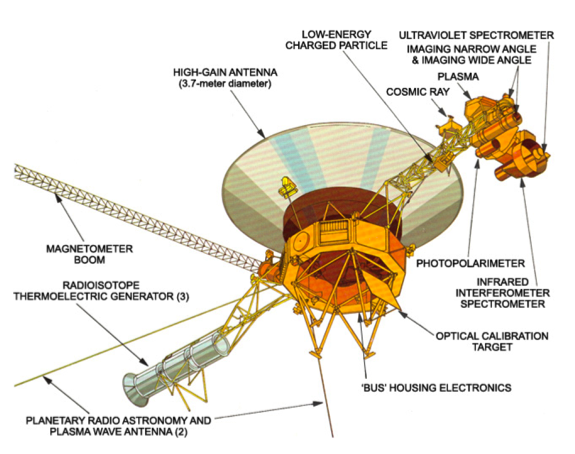
Instrument Characteristics
The low energy charged particle experiment employs a set of solid state detectors arranged to characterize, with various levels of energy, directional, and compositional discriminations, the in-situ charged particle environment of the spacecraft, both within interplanetary and planetary magnetospheric regions. Electrons can be characterized, with various electron rate energy channels, between 26 keV and greater than 10 meV (mode dependent). Ions, without mass species discriminations, can be characterized with various ion rate energy channels between 30 keV and greater than 152 keV. Above about 200 keV/nucleon, the ions can be discriminated as to their mass species composition by the use of multiple parameter measurements. Angular information is obtained through mechanical rotation of the detectors. The main detectors look within a single scan plane that is rotated 360 degrees, stopping at 8 different look sectors. The lower energy detectors have full width view cones of about 45 degrees
LECP Science Objectives
Characterize the energy spectra, angular distributions, species, composition, spatial structures, and temporal variations of the hot plasmas, energetic particles, and particulate radiation that exist in the vicinity of the outer planets (Jupiter, Saturn, Uranus, and Neptune) and within the interplanetary environment.To study the mechanisms by which such particles are energized and transported throughout such systems.
To study in particular the energization and transport processes associated with hot plasmas and particulate radiation in the vicinity of planetary bow shocks, magnetopauses, magnetotail plasma sheets, inner radiation zones, the auroral zones, etc.
To study the interaction of such media with planetary satellites and the planetary atmospheres and ionospheres.
References Helpful in Scoping the Mission
Mission Description
Spacecraft Description
Spacecraft Description
The LECP Data
Instrument Description - Also see Space Science Reviews 21 (1977 – Issue 3) 329-354.
The Data are located at the PDS/PPI node.
The Data are located at the PDS/PPI node.
Publications - A listing of team members to facilitate literature searches.
 PDS: The Planetary Atmospheres Node
PDS: The Planetary Atmospheres Node


